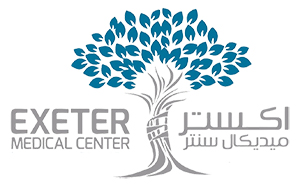Shoulder Impingement
What is shoulder Impingement?

The most common reason for shoulder pain is inflammation in the shoulder tendons and bursa in the subacromial space (picture) termed bursitis or tendinitis. Sometimes individual’s with shoulder impingement may experience severe pain at rest, during sleeping and with activities. They may have weakness of the arm, making it difficult to raise the hand overhead. It is sometimes referred to as Swimmers shoulder, tennis shoulder or rotator cuff syndrome. The shoulder is a joint with a great range of movement, putting high demands on the muscle function around the shoulder. The space between the upper 2 bones in the shoulder, the subacromial space, is very narrow and when the bursa or tendons get inflamed they often swell and make the space even narrower. Subacromial pain makes movement of the arm painful especially in the elevated and overhead positions. Reduced use of the arm and protection of the shoulder due to pain often leads to secondary problems with the posture and muscle function around the shoulder and neck. This may further increase the pain in the neck and shoulder, and pain may sometimes radiate down the arm.

Typical symptoms:
- Pain at rest and during activities
- Pain in the overhead position and when raising the arm
- Pain at night and sleep disturbances
- Pain radiating from the neck to the arm
What is the reason for impingement?
Sometimes there is no good reason and the pain just starts one day. The pain can be caused by an accident to the shoulder or during sports or fitness-training. Sometimes there may be damage to the rotator cuff tendons in the shoulder causing the muscle to be weaker and this may increase the impingement. In younger individuals impingement often starts due to imbalance of the muscle function in the shoulder. Even thought the outer muscles are strong, the rotator cuff muscles, stabilizing the head of the shoulder in the socket, may be overused or weak. This will make the head of the shoulder glide upward during exercises with heavy loads. In middle age and older age the rotator cuff muscles can be partially torn and weaker and often there is narrowing of the subacromial space due to spur formation and changes in the size of the acromion. Inflammation and Calcifications can develop within the rotator cuff tendons and the subacromial bursa. Figure 3: How the muscles work around the shoulder: A: normal function, B: week rotator cuff with upward migration of the humeral head.


How do I get the diagnosis and what does the doctor do?
The doctor will do an examination of the neck and shoulder to test movement and function in the shoulder and perform specific clinical tests to locate the pain and injury. If there is any sign of muscle weakness, nerve compression or other diseases, evaluation with x-ray, MRI and blood tests may be necessary, to rule out other diseases or injuries to the neck and shoulder.

Other reasons for shoulder pain
- Osteoarthritis
- Rotator cuff tear
- AC-joint osteoarthritis
- Biceps tendon disease
- Instability
- Rheumatoid arthritis
- Cervical spine nerve compression
What is the treatment?
Most patients can be cured with conservative treatment – This means rest, treatment of the pain and inflammation and rehabilitation of the shoulder muscles. It is generally not advisable to immobilize the arm in a sling, but heavy lifting, overhead sports or heavy work should generally be avoided until the pain has decreased. Otherwise the arm and shoulder can be used for all normal daily activities
Should I have an operation to my shoulder?
If conservative treatment has been tried for 3-6 month and the pain continues, the surgeon may suggest a surgical procedure. The procedure is a keyhole/arthroscopic surgery. The operation is done through two or three 5 mm wounds and the shoulder is inflated with sterile isotonic saltwater during the procedure. The surgeon will tell you about the procedure method and risks.

Pain control
- Painkillers and Anti-inflammatory medications.
- Stronger medication is seldom required
- Anti-inflammatory gels locally applied in the painful region
- Cortisone injection in the subacromial bursa
- Massage and acupuncture
- Relaxation medication for the muscles can be required if the muscle cramps and pain are severe
Rehabilitation of function and restoration of muscle function around the shoulder
When the shoulder pain is under control and the diagnosis has been confirmed by your doctor, physiotherapy may be recommended. The goals of this treatment are to restore the muscle balance around the shoulder and to strengthen the inner layer of muscles, called the rotator cuff.
Can I do something wrong?
- You should avoid immobilizing the arm in a sling
- Lifting to heavy loads during training and exercise may also increase the pain and it can be difficult to figure out exactly how to do the exercises.
- The physiotherapist will instruct you how do the exercises in a safe and helpful manner.
- The physiotherapist will make a program for the exercises and tell you how often you should do your training.



